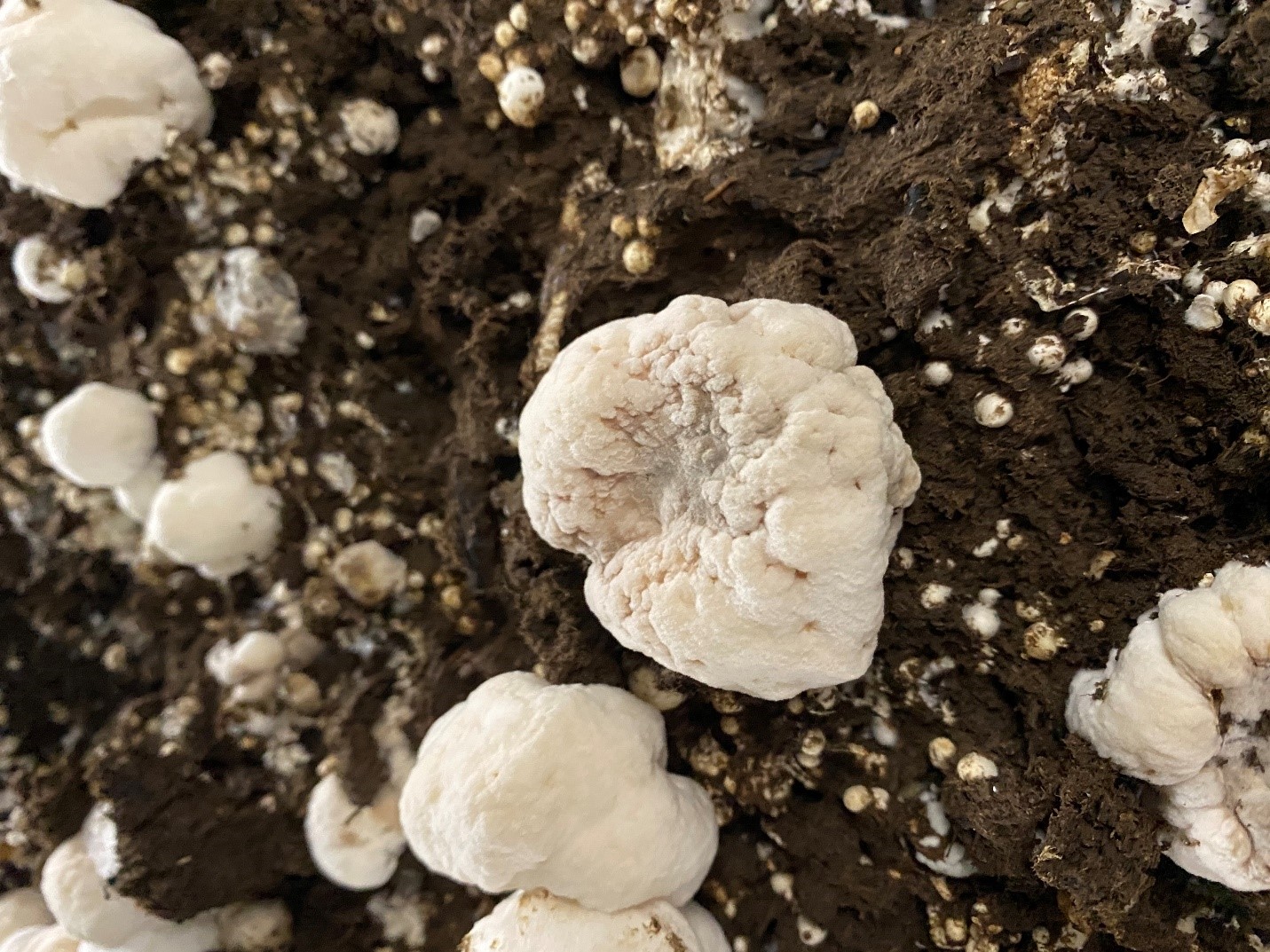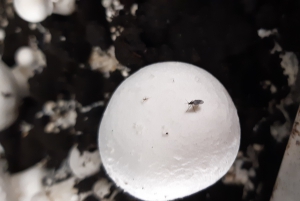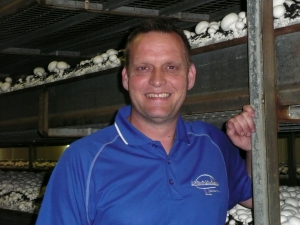Fungal Diseases
The life cycle for fungal pathogens like Dry Bubble, Trichoderma, and Cobweb is simple, Figure 1. Spores germinate into mycelium, which forms structures that produce spores. In a petri dish culture that may take less than a week; in compost or casing, it is probably pretty much the same. However, other factors like pH, moisture, and nutrient availability may influence this life cycle timing. Much of that, however, is unknown for these pathogens.

| Figure 1 Typical fungal life cycle showing spores to fruiting. Source: researchgate.net |
Looking at the disease cycle in mushroom cultivation, we know a relationship exists between spore load, time of infection, and symptoms or signs of disease development. Let’s look at the three most common fungal diseases and what we know about these relationships.
Dry Bubble, caused by Lecanicillium, or Verticillium has symptoms that develop based on spore load and timing of infection. Spores coming in contact with a fully colonized spawn run don’t germinate well and little disease will develop. It may be possible that spores landing on the substrate the day before or the day of casing could cause an early disease development. Spores in contact with the rhizomorphs in the casing will easily germinate. How fast they germinate, and the vegetative mycelium growth may be influenced by casing pH, moisture, relative humidity, and temperature.
It is unknown what the optimum conditions are but in general the warmer the conditions the faster the growth and the shorter time from spore to symptom development. In general, spore to symptom takes about seven to 14 days depending on the above factors. However, when Dry Bubble mycelium is in contact with mushroom pins,metabolites are produced that degrade mushroom tissue. This process seems quick, perhaps hours to a day or two.
Read the full factsheet here.
Written by: David M. Beyer
Recognise, isolate and control
These three principles are the base of disease control on a mushroom farm. To my opinion there is no farm that has not a spot of disease somewhere.
But depending on what is done it will develop into a serious problem or it will stay a hidden time bomb.
If a problem is discovered it is of crucial importance that is recognised. To make sure that will happen training of people on the farm and especially pickers is needed. They are your eyes on the farm.
They need to know the most common diseases and especially in a young stage. Many places of dry bubble are not recognised and are only seen if the disease is in an almost incurable stadium. The small wart on a mushroom or grey spot is often missed.
The same goes for insects. Many growers do not know the difference between a phorid and a sciarid. Although the damage pattern is totally different, so Is the threshold where it really starts costing production. Also the cure is completely different.
Example: growers use diflubenzuron against phorids.
It is only active against sciarids.
If the disease is recognised then it should be isolated. It can be covered on the spot but the most important is to simply keep all doors closed. Check filters and door seals. If a room is infected, make sure the infection is contained in that one room and does not spread on the farm.
After the isolation the disease can be treated. If the spot is detected in an early stage one can do with just a sport treatment. If it is more the whole room should be taken on.
But too often the infection spreads and the whole farm must be treated. Generally room treatment for a full cycle with an overlap of two or three rooms to break the lifecycle of the disease.
So, just a test:
Look at the photo and spot the phorid. Or is it a sciarid?
Dry bubble (Verticillium fungicola)
One of the most seen disease in mushroom farms is the dry bubble, caused by the fungus Verticillium fungicola. Its easy to get an infection in the farm and because the disease is very infectious it can spread quickly through the whole farm. Especially in big farms, where many pickers are working, the dry bubble will spread very fast and can cause a lot of damage and be that bad that 3rd breaks may be lost. Pickers should be getting all the information about the dry bubbles so they can detect the infection in an early stage.

A dry bubble in a 2nd break.
Dry bubble is generally caused by spores around the farms in windy, dusty conditions. On filling days when its windy outside with dust in the air its very well possible to get the dry bubbles into the farm. When they are spotted before he 1st break, the infection came in at filling. Once inside it’s a matter of time before the spores are everywhere if not handled well. Hygiene on the farm should be checked and especially have a good look at all the materials that are used for your mushroom waste like stem bins. Spores of bubbles will be present there if not cleaned well and can be spread if materials are getting moved between rooms. Also pickers are a concern for spreading the infection. Spores are sticky so everything that gets touched after touching a bubble can get infected, be aware!!!, it can go rapidly.
Removing the bubbles is off course also very important. When the pickers don’t recognize a bubble and are picking mushrooms while touching dry bubbles it will be always be hard to control the infection rate. Educate them well and spread around as much information as you have to inform pickers about the diastase and the big risk it has on the results of the farm. Let them, or the picking lead, report the infection so a special crew can handle it the right way.
When the pickers recognize the bubbles, the next step is removing the infection as soon as possible. Makes sure when you remove the bubble you don’t spread the spores what will results in more bubbles within 4 to 5 days. Use a wet tissue to cover infected spots too avoid the spread and remove all the spot including the casing soil, using a plastic bag. Close the bag immediately after you have the bubble and surrounded casing soil inside and remove the bag from the farm as soon as possible. You can also leave it in the affected room and remove it after cook-out. After removing it use salt or ammonia to cover the infected area and inspect the area every day to see if the infection is spreading.
It all comes down to a good hygiene, organization and education. Infection can occur suddenly but if threated the right way can also be stopped rapidly. Organize it well so that infections get removed before rooms get picked or watered, those are moments when spores will spread. If everybody recognizes the disease and knows what to do and handles right, bigger problems can be avoided. Hygiene is key, not only for dry bubbles, and should never be underestimated.
Erik de Groot
This email address is being protected from spambots. You need JavaScript enabled to view it.























